There’s no mistaking that natural health and beauty care (HBC) is a booming industry. Here, we discuss the latest developments to keep in mind when selecting personal care products for your store.
Supplements Go Inside Out
One unmistakable HBC trend of late is the entrance of some familiar faces into the HBC category: supplement makers. It would be wrong to think these companies don’t have the expertise to make valuable contributions to the segment. In fact, personal care can mesh better with their core competencies than you may think.
For example, Health Plus, Inc., Chino, CA took advantage of its detoxification knowledge when it designed its soon-to-launch Attitude personal care line. “Through the years, the mainstream has begun to understand the meaning of internal cleansing as well as how products with natural ingredients are safer, and that better quality natural products are effective in delivering results. We know that the skin is the largest organ of the body and it functions as a premier barrier against toxins. It also serves to flush out extraneous matter. We feel an optimal skincare system of cleansing and moisturizing is sensible and will be both immediately understood and embraced by consumers,” says Sunil Kohli, the company’s COO.
Another supplement company that is just making its mark on the personal care category is Himalaya Healthcare USA. New this spring is Organique by Himalaya, which is made with all-natural ingredients that are (wherever possible) “organically produced using USDA-certified handling practices,” says the company. Already knowing the ins and outs of herbs from its supplement experience, the firm formulated the line with a host of high-quality herbs including ashwagandha, basil oil, geranium oil, neem leaf extract, rosemary, triphala, turmeric oil and several others. The line also was designed with sustainability in mind: ingredients are grown by farmers using renewable resources and the packaging is made from recycled material.
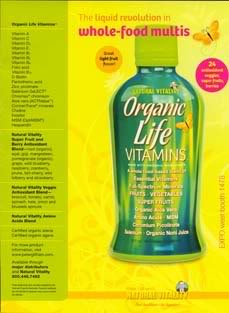 For supplement companies that specialize in one core ingredient, personal care products may be an easy target. After all, it’s well known that many nutrients we consume are beneficial in topical form. Beverly Hollister, senior vice president of XanGo, Lehi, UT, says this was the case at her firm, which recently launched the Glimpse line of skincare products. “When XanGo’s founders discovered the mangosteen, they soon realized that traditional use of the mangosteen in Southeast Asia spoke not only to internal consumption, but also to its topical nutrition qualities.”
For supplement companies that specialize in one core ingredient, personal care products may be an easy target. After all, it’s well known that many nutrients we consume are beneficial in topical form. Beverly Hollister, senior vice president of XanGo, Lehi, UT, says this was the case at her firm, which recently launched the Glimpse line of skincare products. “When XanGo’s founders discovered the mangosteen, they soon realized that traditional use of the mangosteen in Southeast Asia spoke not only to internal consumption, but also to its topical nutrition qualities.”
Supplement makers may have several advantages in this category such as brand recognition. Natural products consumers are notorious for being loyal to brands they love. In fact, your typical supplement-only shoppers may be more prone to try a personal care product by recognized and trusted makers of the supplements they love. As they warm up to the idea of natural personal care, you may find them happily shopping across additional market segments.
NOW Foods is a good example. Says Kim Wells, personal care and outbound sales manager of the NOW Health Group, Bloomingdale, IN, “NOW has always carried a small selection of HBC products and as more consumers realize the effectiveness and safety of natural skincare products, we have seen an opportunity to expand the line. NOW has become a ‘one stop shop’—we have a great variety of supplements, sports nutrition, foods and personal care.”
Another plus could be the co-packaging of inside/outside products. Industry chatter indicates a wave of these items may flood the market in the coming years. The NOW Health Group is one such company in development with an inside/outside line. Says Wells, “We do recommend taking supplements along with the use of topical products to help improve the appearance of skin and for a healthy lifestyle.”
Health Plus, too, is in talks about the possibility of several “creative promotions based on the inside-outside theme.”
These companies have good reason to do so, as many industry experts feel natural supplements and topicals work well together. Says Hollister (whose company currently cross-markets its mangosteen HBC and supplement lines), “The skin is the largest organ of the body, and we know that what we absorb through the skin ends up in the bloodstream. Similarly, what we consume has effects on our overall health and appearance, so the two work hand-in-hand.”
This could mean boosts in sales for savvy retailers who follow their lead to co-market relevant supplement and HBC lines.
Clean and Fresh—Naturally
It’s odd to consider the following instructions given to millions of young children daily: Keep this fluid in your mouth for two minutes, but don’t swallow—it can be harmful.
Says Eileen Sheets, managing director at Bioforce USA, Ghent, NY, “The things you put in your mouth are absorbed quickly into your body. That should cause us to really examine ingredients in our oral care products…[You] don’t even have to swallow to have the toothpaste absorbed and there are many artificial ingredients in oral care products that you don’t want to have in your body.”
Though fluoride helps prevent cavities, ingesting too much can put kids at risk of fluorosis; other common toothpaste ingredients like sorbitol and sodium lauryl sulfate can be dangerous, too. Says Nicholas M. Kavouklis, DMD, president and CEO of Dr. Nick’s White & Healthy, LLC, Tampa, FL, “The majority of traditional products have alcohols that dry your tissues, extra and unnecessary fluoride additives and preservatives such as parabens. Most traditional products contain sodium laurel sulfates (soaps) for foaming, but can cause tissue irritations and can lead to mouth ulcers. Most contain unnecessary artificial sweeteners and artificial colors to enhance flavor and appearance and save costs at the expense of purity and quality.”
Key Ingredients. Research confirms that natural ingredients offer a good alternative to the traditional. For example, xylitol is a key ingredient in this market. According to information from xylitol specialist Xlear, “Numerous field studies conducted throughout the world have led to official endorsements by dental associations in Finland, Norway, Sweden, England, Ireland, Estonia and the Netherlands of products containing high levels of this sweetener.”
The firm explains how xylitol works: the bacteria that cause tooth decay cannot ferment xylitol (like it can with sugar), which reduces their growth. According to Xlear, “The number of acid-producing bacteria may fall as much as 90%. Since no acid is formed, the pH of saliva does not fall. After taking xylitol, the bacteria do not stick well on the surface of the teeth and the amount of plaque decreases.”
Wells of NOW Health Group notes that the company uses a large percentage of xylitol in its natural dental care products for its dental benefits and its sweetness.
According to Sheets, herbal ingredients are also important players in the dental care category. She notes several particularly beneficial herbs in the Vogel line of dental products:
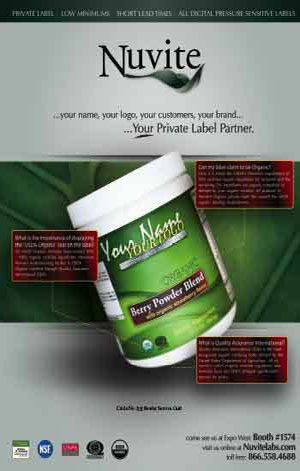 • Sage is known to prevent the development of bacteria.
• Sage is known to prevent the development of bacteria.
• Sanicle and Burnet have anti-inflammatory properties.
• Rhatany firms and invigorates the gums.
• Rosemary, echinacea and peppermint are antiseptic and “ensure the gums are not likely to become inflamed.”
Other key dental care ingredients, says Kavouklis, are lycopene (a natural antioxidant), sodium citrate (to help prevent tooth sensitivity) and wheat germ (promotes rapid tissue healing).
Whitening Products. One important product trend of note is for natural teeth-whiteners and brighteners. Years ago, this was a limited market in the natural realm, but today, the segment is ripe with options to meet consumer needs. For example, JASON Natural Products, Culver City, CA, launched in 2008 a line of whitening products (PowerSmile) that uses enzymes to leave teeth whiter. When asked about the key ingredients in this line, JASON brand manager Catherine Blackwell stated, “Papaya and pineapple enzymes safely and effectively break up stains to make teeth their whitest, naturally. A blend of silica and baking soda effectively polish and clean teeth. Tea tree and neem oils naturally fight oral bacteria to leave gums and teeth clean and healthy.”
Another whitening product on the market uses a pH-balanced hydrogen peroxide in a dual-chambered delivery system. Says Kavoulis of the Dr. Nick’s line, “Hydrogen peroxide has been used in dentistry for 100 years and has been proven safe and effective…Our pH-balanced pure hydrogen peroxide forms an oxygen-rich foaming action that cleanses between the teeth and below the gum-line to remove debris that most oral care products can’t reach. [It’s] almost a flossing of the gum tissues as it eliminates the top ten pathogens (bugs) that cause gingivitis and plaque buildup.”
Market Expansion. Industry insiders believe the dental care market segment is ripe for future growth, especially for dental care products like mouthwashes and rinses. Says Kavouklis, “As the consumer becomes more educated on ingredients and formulas, they understand that 24% alcohol in your mouthwash is 48% proof it burns sensitive gum tissues, and kills good and bad bacteria.”
Another specific place for growth may be for products geared for older consumers. According to Sheets, natural denture adhesive is virtually an unmet need in the natural personal care category. She explains that about 32 million Americans wear full or partial dentures, according to the third U.S. National Health and Nutrition Examination Survey (NHANES III). “Up until now, they have had to purchase their denture adhesive from what was available in drug stores or supermarkets. But, now there is a healthier, more effective denture adhesive available,” she explains, referring to SECURE Denture Adhesive. This product is non-water soluble, does not dissolve in the mouth and won’t be swallowed. According to Sheets, the adhesive forms a more secure and comfortable bond than conventional adhesives, which work by suction.
“There seems to be a misconception in the health food stores that folks who shop there do not wear dentures. This thinking is a disservice to the store that loses out on an additional revenue stream, as well as to the their customers who wear dentures,” Sheets explains. She also anticipates that we will see more and more consumers looking for natural denture adhesives.
How Your Mature Clients Can Avoid a Bad Hair Day
When we talk about the effect baby boomers have had on the natural products industry, we often discuss increased need for products such as bone and joint supplements and anti-aging creams. But, what does the hair care category have to offer mature clients?
A lot, it turns out, which is important. Over time, hair tends to look and behave differently than younger hair. Says Sheets, “By 50, there can be several things going on with your hair. Number one, of course, coarse gray hairs all over your head. Plus your natural color is fading and looking very dull. Many find that their hair is thinning. This all adds up to a huge bad hair day.”
 Repeat ed coloring with traditional products can take a major toll on hair health. Says Kim Eidson, vice president of marketing at Save Your World, Atlanta, GA, “Hair becomes brittle and lackluster with age, dries out and sometimes becomes wiry and unmanageable. Because of this, a special, more gentle, nutrient-rich formula of hair care is needed to maintain the color (if treated) and restore the hair to a more vibrant, youthful state.”
Repeat ed coloring with traditional products can take a major toll on hair health. Says Kim Eidson, vice president of marketing at Save Your World, Atlanta, GA, “Hair becomes brittle and lackluster with age, dries out and sometimes becomes wiry and unmanageable. Because of this, a special, more gentle, nutrient-rich formula of hair care is needed to maintain the color (if treated) and restore the hair to a more vibrant, youthful state.”
Luckily, retailers can point mature customers to their haircare offerings with confidence. Though many are products intended for all age groups, they often have key nutrients that work well for mature hair in need of moisture, strength and luster.
For example, products that offer extra moisture to brittle hair, says Eidson, may include those infused with “avocado oil (rich vitamins A and E), which opens up the shaft of the hair and allows the nutrients to penetrate the hair.” She adds that coconut oil has long been used “to add shine to lackluster hair” and aloe can help “retain moisture and prevent brittleness.”
Other good ingredients to watch out for, says Sheets, are protein (which is “necessary when coloring has damaged the protein of the hair”) and vegetable moisturizers such as mallow, rosemary and wheat bran lipids.
Older clients may also experience some hair thinning. Concerned customers may want to know about products infused will silica and biotin, which may help with regrowth. And sea alginate, according to information from Dreamous Corp., Torrance, CA, “promotes retention of natural moisture” and along with EFAs, ”encourages micro-circulation in the scalp and may keep hair follicles from being clogged.” Minerals and pine extract, it notes, also help to stimulate hair growth.
One cannot address the topic of haircare for older clients without discussing hair-coloring products. The case for such natural products isn’t hard to make. According to Jeff Greaves, president of ACT Naturals, New York, NY, traditional hair color often uses oxidative dyes, which have a plethora of problems associated with them:
• They contain paraphenylene diamine (PPD) or other phenylene diamines (i.e., coal-tar dyes), which are known allergens and suspected carcinogens.
• They require raising the pH of hair using ammonia, peroxides or similar compounds, which damages the hair.
Greaves adds that henna avoids these problems, but adds others:
• Limited shade palette.
• Difficult to use.
• Dull shades.
• Color cannot be lifted out if results are not satisfactory.
In addition, says Sheets, they often are harsh, smell bad and drying to hair. “Yet, very few women are willing to live 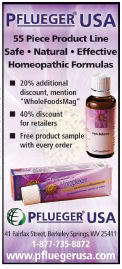 with their gray hair, so they have used the traditional hair dyes even tho gh putting it on your scalp allows for absorption into the body,” she observes.
with their gray hair, so they have used the traditional hair dyes even tho gh putting it on your scalp allows for absorption into the body,” she observes.
Sheets notes that the coloring agents in her company’s dye (Herbatint) includes rhurbarb, black walnut and chincona. The company uses these ingredients for important reasons. Says Sheets, “Color molecules from the herbs are smaller than synthetic color so the cuticle of the hair doesn’t have to open so much to let the color in. This leaves the hair shaft smoother, which makes it shinier.” In addition, she explains that the color is translucent “so the natural variations in your own color come through making your new color look very natural.”
Greaves agrees that natural products offer color that is—well—more natural. “Traditional coal tar dyes give a very bright, but to some minds ,almost unnatural shade. The nice thing about [natural hair coloring] is the color is very evident and the gray coverage of permanents is often quite effective. [ACT Natural] hair colors tend to have a refractive index closer to that of melanin, the natural pigment in hair, which gives a warmer look and, where gray coverage is not 100%, the color tends to be blended in and minimized more naturally.”
Facial Moisturizers Do Double Duty
According to a 2007 worldwide market report from Neilson Global Services on personal care, “skin is in” (1). Facial moisturizers was one of the top skin-related categories in terms of sales growth (10%), to which the Neilson Group attributed, in part, to products that moisturize/cleanse and also offer another benefit such as anti-aging. Clearly, consumers are trying to tell us something.
Says Christa Skov, brand manager for Alba Botanica, Petaluma, CA, “Consumers are really looking for their moisturizer to go above and beyond hydration. They want their moisturizers to deliver anti-aging benefits, protect skin from free radical damage and promote a youthful, healthy appearance.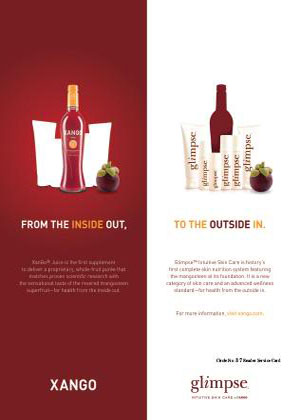
Retailers who want to be successful in this category should think of moisturizers as “skin treatments.” Misha Hughes, an expert medical aesthetician and personal care consultant to XanGo suggests the following elements to zero-in on when selecting moisturizers for your HBC section:
• nourishment from antioxidants and other phytonutrients,
• exfoliation,
• and stimulation of collagen that leads to increased production.
The latest generations of moisturizers have answered this call. Says Stephen Strassler, founder and president, Reviva Labs, Haddonfield, NJ, “Whereas original moisturizers were formulated to help prevent moisture loss via advances in skin science, there are now much more advanced moisturizers. Now, moisturizers offer antioxidants to help protect against environmental damage; peptides to help build new collagen and elastin in skin; firming agents; texturizing ingredients; elements to fight redness, spider veins and rosacea; lightening ingredients to fight skin discoloration and more.”
WholeFoods asked industry companies to explain the benefits of the active ingredients in their double-duty moisturizers. Here’s what they had to say.
Hydration. The foundation of a healthy skincare regimen should include a nourishing moisturizer. “Your nourishing cream needs to replenish the natural moisture in the outermost layer of the skin and protect the existing moisture content, while supporting the infrastructure of the cells,” says Myra Michelle Eby (founder of MyChelle Dermaceuticals, Frisco, CO) in Return to Beautiful Skin (2).
• Hyaluronic acid, dubbed the moisture magnet, is said to be the support structure for living cells. This compound can hold more water than any other molecule, keeps skin collagen hydrated and plumps the skin (3). Since its production lessens as we age, it is important to replenish hyaluronic acid topically and/or orally to keep skin soft, smooth, moisturized and wrinkle free (4).
• Algae may be another way of hydrating the skin, according to Skov. She describes the various marine-based components in the Alba Advanced line: “Laminaria digitata, derived from kelp, which is highly moisturizing and smoothing and promotes and maintains firmness; Macrocystis pyrifera, derived from kelp, which is softening and nourishing and helps skin retain moisture and Spirulina maxima, which is derived from blue-green micro-algae and offers anti-aging and skin firming benefits.”
• A related nutrient is the antioxidant astaxanthin, which is harvested from microalgae and “has the amazing ability to shut down free radicals and protect the skin from ultraviolet (UV) damage (1,000 times more effective than both beta-carotene and lutein in protecting skin from exposure to UV light) and environmental stress,” notes Linda Miles, L. 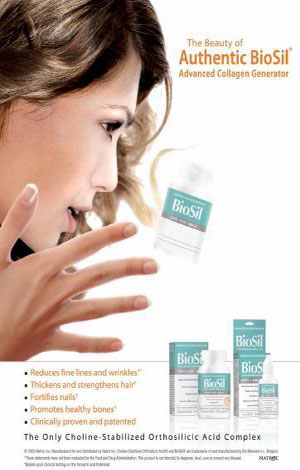 Ac., D.O.M., v ce president of derma e Natural Bodycare, Simi Valley, CA.
Ac., D.O.M., v ce president of derma e Natural Bodycare, Simi Valley, CA.
• Shea butter is a standby for moisture and can help “control the signs of inflammation from within the skin,” says Hughes.
• Dimethylaminoethanol (DMAE) is another moisturizing agent that has an important role: skin firmness. This agent is said to increase muscle contraction, which tightens the skin. And, it hydrates connective tissues so that skin can stretch more firmly (5).
• Pycnogenol (an extract of the French maritime bark) is “50 times more powerful than vitamin E and 20 times more powerful than vitamin C in neutralizing free radicals,” says Miles. The way it works, she explains, is by “stabilizing the capillary system, increasing the skin’s resistance to inflammation and supporting healthy microcirculation. It enhances texture and elasticity, reduces irregularities and works with vitamin C to help rebuild collagen and elastin fibers.”
• Essential oils, says Eby, are essential components of a good moisturizer because they enhance oil production and keep skin soft and supple. She names a few good ones: rose, neroli and bergamot. To this list of oils, Daniel Wiser, brand manager for Avalon Organics, Petaluma, CA, adds coconut, borage and flax oils to “repair and nourish for therapeutic hydration.” Olive oil also is said to help nourish the skin.
• According to information from Dreamous Corp., several homeopathic materials can help nourish skin while encouraging cell renewal. Such ingredients include ferrum phos (to improve circulation, tone skin tissue and calm inflammation), natrum sulph (may eliminate toxins and reduce puffiness), aqua and hydrogenated lecithin (helps nurture skin), capric/caprylic triglycerides (acts as an emollient), shea butter (helps prevent premature wrinkles and fine lines) and sunflower seed oil (protects and lubricates skin). These ingredients are all part of the company’s Replenishing Moisturizer.
Suncare/Antioxidants. UV light from the sun is a chief enemy of healthy skin. When UV rays penetrate the skin, it breaks down two major support structures for the skin: collagen and elastin. Over time, repeat damage to the skin can cause scar tissue and loss of elasticity. “Ultimately, the skin will become thick, unable to retain water and void of collagen and elastin,” Eby explains. She estimates that “Sun exposure causes up to 90% of the visible signs of aging skin, including wrinkles, age spots and broken capillaries. This makes sense because the sun can directly damage collagen and elastin, the two most important youth-enhancing structures of the skin.”
Wiser notes that “SPF in a daytime moisturizer is a must, given the damaging effects of over-exposure to the sun. Additional trends include repairing skin that has been already damaged from the sun, protecting skin from free radicals and preventing against the visible signs of aging.“
 To help, consumers are turning to topical antioxidants for fresh-looking skin. Says Miles, “Antioxidants that have been scientifically proven to be effective for topical application are the fastest and most effective way to counteract skin’s age damage caused by free radicals.”
To help, consumers are turning to topical antioxidants for fresh-looking skin. Says Miles, “Antioxidants that have been scientifically proven to be effective for topical application are the fastest and most effective way to counteract skin’s age damage caused by free radicals.”
For example, vitamin C, says Wiser, “provides antioxidant intensive defense from the sun.” Vitamin C may accomplish this by protecting water-soluble structures from oxidation. And, vitamin E may help guard against photoaging, which could result in reduced wrinkles, roughness and darkness, according to studies (6).
Coenzyme Q10 is another major player in this category for cellular renewal and wrinkle defense. This enzyme is found in every living cell of the body and, according to Wiser “plays a particularly important role in skin rejuvenation.” He notes as we age, “CoQ10 levels diminish, accelerating the aging process of the skin. By bolstering levels of this important enzyme within our skin, topical applications of CoQ10 have been shown to reduce the signs of aging.”
Superfruits, which often have a high ORAC value, are increasingly used in personal care. Mangosteen, for example, is well suited for personal care applications. According to Hollister, “There are several benefits associated with the mangosteen pericarp, the most notable of which are xanthones, the potent phytonutrients that are rich in antioxidants.”
Hollister notes that her company has developed three ingredients from the mangosteen’s pericarp that are fused with purified mangosteen water and then manufactured through cold processing to preserve their natural potency. “Mangosteen contains high concentrations of catechins, proanthocyanidins and other nutrients that also nourish the skin, helping to calm the signs of inflammation and stimulate collagen growth.” She ci tes in vitro studies with the Japan Food Research Lab that demonstrate the antioxidant strength of her company’s skincare products (Glimpse) are 30 times more potent than green tea.
 Miles adds two other superfruits. First, pomegranate contains high levels of ellagic acid, punicic acid and polyphenols, which makes it beneficial to those who want to prevent fine lines, firm the skin’s epidermis and reduce free radical damage.
Miles adds two other superfruits. First, pomegranate contains high levels of ellagic acid, punicic acid and polyphenols, which makes it beneficial to those who want to prevent fine lines, firm the skin’s epidermis and reduce free radical damage.
And, cranberry oil is packed with tocotrienols, which are absorbed readily and help “protect the skin from free radical damage and UV-induced oxidation,” according to Miles. In addition, this oil contains omega-6 and omega-3 fatty acids, which “are especially important for maintaining normal skin structure and hydration.”
Goji berry and açai berry, she adds, also have important skincare benefits.
Other ingredients that may provide antioxidants benefits or minimize free radicals associated with the sun include bromelain enzyme from pineapple, alpha lipoic acid, soy, vitamin A (retinol), Canadian willowherb and tea extracts (such as white, black, green and oolong).
Redness reduction. Redness of the skin can crop up for a host of reasons such as sensitivity, broken capillaries or Rosacea. The latter is a skin condition that affects about 14 million Americans. Eby notes that anti-inflammatory herbal agents (like totarol, willow, arnica, or chamomile) may be helpful. Or, customers also can be directed to products that include cucumber extract for mild redness reduction.
According to Wells of NOW Health Group, the branded ingredient Celadrin has much research support for this application. “Research on Celadrin at 10% has a positive effect on helping calm red blotchy skin and can also provide the skin the nutrients it needs reduce the signs of aging. This ingredient is great for the face and other sensitive or exposed areas.”
Strassler adds that vitamin P (rutin and citrus bioflavanoids) [is suitable] for redness, rosacea and spider veins.
Men Get Their Fair Share
The days of men having just a handful of natural personal care options are over. “Men’s personal care products are a growth category internationally,” says Bettina Bond, national educator at Surya Brasil, Woodside, NY. “Also, the demand for luxury men’s products is driving interest in this category. One of the fastest growing phenomena identified in a study by Neilson on personal care trends was the interest of today’s male in improving his personal image. “So, what exactly goes into making a men’s-only line?
According to Strassler of Reviva Labs, the formulation is more than just adding aroma and colognes. “There is now more emphasis on ‘function’...products that answer and address skin problems or help keep skin looking young.“ In his company’s men’s line, for example, “the formulas are geared for surface correction of skin deficiencies, whereas our women’s products are formulated for deeper absorption and deeper corrective action.”
Men may have more skincare challenges than women, says Bond. “Due to their higher levels of testosterone, men 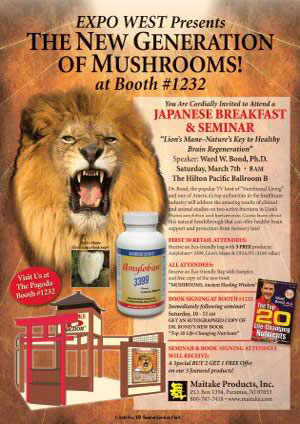 naturally produce more sebum than women.” For this reason, she notes that a good men’s line will help regulate and balance oil production, “which supports an attractive healthy complexion.“
naturally produce more sebum than women.” For this reason, she notes that a good men’s line will help regulate and balance oil production, “which supports an attractive healthy complexion.“
In addition, men’s skin tends to age slower than women’s because it is thicker and oilier. “But once their skin does start to wrinkle, the wrinkles are deeper and more pronounced than women’s wrinkles,” says Bond. Therefore, another element of men’s personal care products should be anti-aging benefits and SPF.
Another thing to keep in mind is that men’s facial skin tends to be sensitive due to shaving. Ingredients such as aloe vera and natural fatty acids may be especially suitable for men because they offer “excellent hydration without added greasiness.”
Merchandising Tips. Luring men to the personal care section doesn’t have to be problematic. One tip from industry experts is to be sure to stock mildly fragranced items as well as products that have two-in-one jobs. After all, most men prefer to have a straightforward, simple personal care regimen.
Strassler suggests creating a men’s section or an end cap: “Items with special packaging for men’s lines should be sep arated from standard lines and sold alongside other men’s grooming HABA products.” When shelving men’s items, be sure to place them at the proper eye level for these clients and have testers available. WF
References
- 1. Neilson Company, What’s Hot Around the Globe: Insights on Personal Care Products, 2007.
- 2. M.M. Eby, Return to Beautiful Skin (Basic Health Publications, Laguna Beach, CA, 2008).
- 3. B. Sardi, How to Live 100 Years without Growing Old (Here and Now Books, San Dimas, CA, 2002).
- 4. “The Hydrating Power of Hyaluronic Acid,” www.dermae.com.
- 5. “DMAE: a New Use for an Old Ingredient,” www.dermae.com.
- 6. “The Antioxidant Theory of Anti-Aging,” www.dermae.com.
Published in WholeFoods Magazine, March 2009










